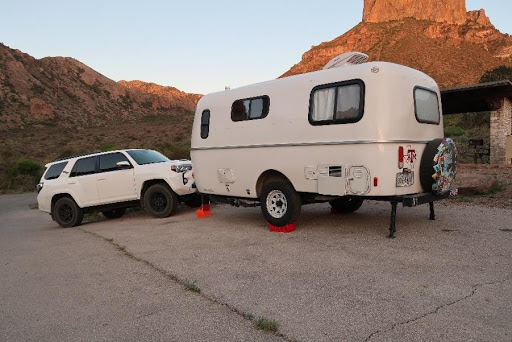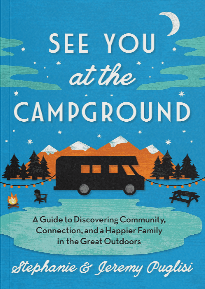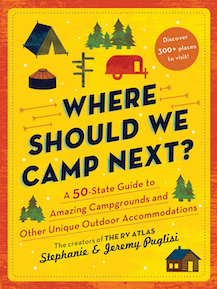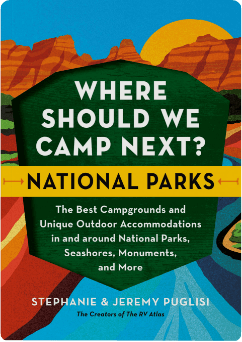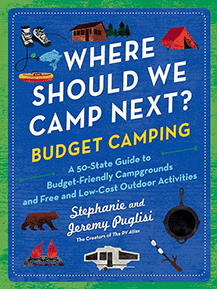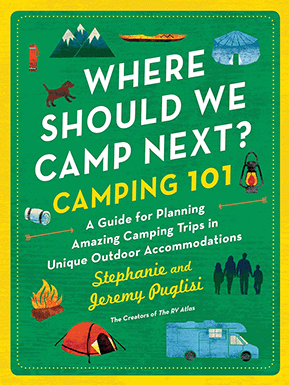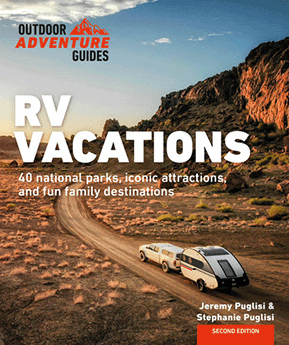Have you ever dreamed about taking an epic RV trip to Big Bend National Park in Texas? It seems like it is a world away from everything which makes a trip there seem magical, and a little daunting.
On the very first episode of the summer season of The RV Atlas we are thrilled to have our friend Ryan Levy on the show to act as our guide to Big Bend National Park! Ryan has visited many times and he has an incredible passion for this magnificent park.
Ryan works in residential construction lives North of Austin in the great state of Texas. His traveling team includes his wife Jennifer and son Benjamin, daughter Bekah, and their two dogs Veddie and Carli Lloyd. They travel in a 2018 Casita Spirit Deluxe. Jennifer and Ryan are members of the The RV Atlas group on facebook and longtime RV Atlas podcast listeners!
The following notes were created by Ryan for his interview on The RV Atlas podcast. We have published them here in their entirety so listeners to the podcast can reference them for planning their own trips! All of the photos are also from Ryan’s collection!
To listen to Ryan’s interview click on the media player above–or subscribe to The RV Atlas wherever you get your favorite podcasts!
Thanks so much to Ryan for contributing such an awesome episode to the RV Atlas podcast! If you are ready to start planning your own epic adventure–then read on!
Where Is Big Bend National Park?
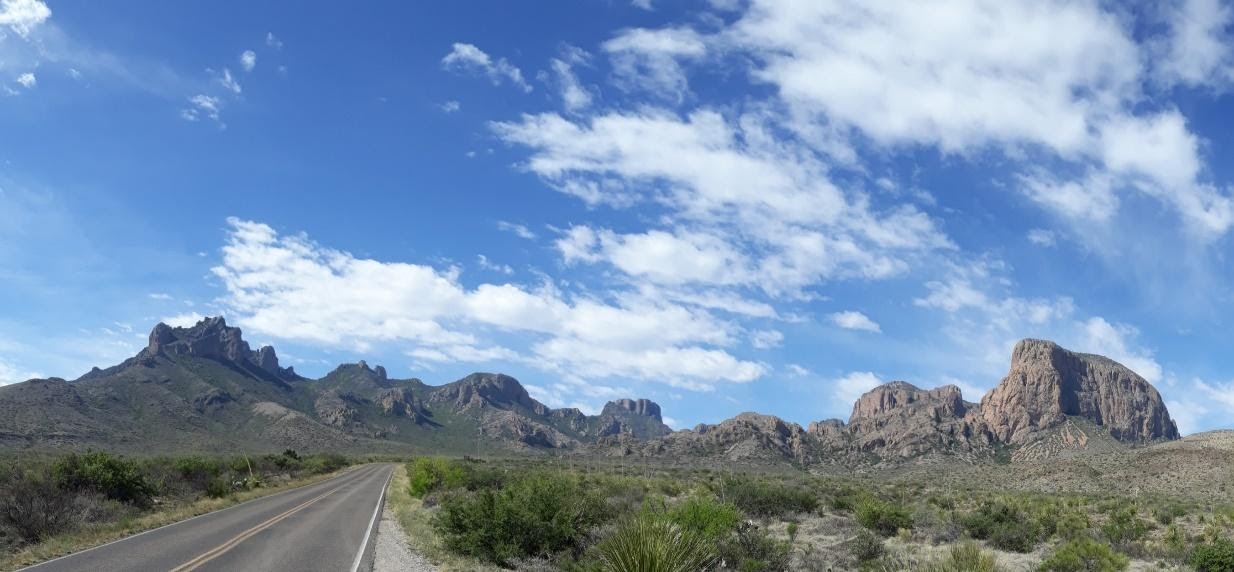
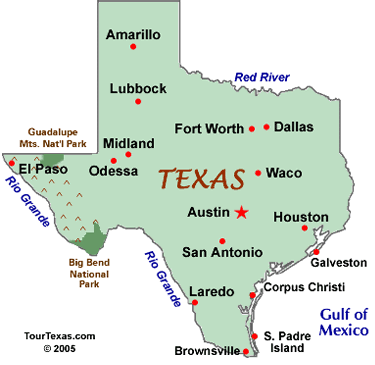
- One of the most remote NPs in the lower 48
- If you look at Texas, it has that bottle opener hook out in West Texas– that hook is basically Big Bend – it is the “big bend” in the Rio Grande River
- In Texas we measure distance in hours, not miles – but no matter how you measure it, it’s far from anywhere.
- El Paso to Panther Junction Visitor Center – ~5 hours
- Austin ~7-8 hours
- Dallas ~8-9 hours
- Houston ~9-10 hours
- You will drive through Fort Stockton if coming from the east on I-10)….that is your closest Walmart. We’ve boondocked at that Walmart on 4 or 5 different occasions – there are always a slew of rigs there.
Areas of Big Bend National Park

- If you split the park into thirds….the Northern and southern thirds of the park are mostly desert without any infrastructure
- The middle third of the park is where the lion’s share of the visitor access is and it can be split into 4 areas – use a little imagination and think of it as a triangle (wide and short)
- Bottom left (SW) corner is Castolon
- Bottom right (SE) corner is Rio Grande Village
- The top (north) corner is Panther Junction Park Headquarters/Visitor Center
- In the middle of the triangle you have the Chisos Mountains
- The park is massive and very spread out
- At over 800,000 acres
- ~50% larger than New Jersey)
- Bigger than Yosemite, Smokie Mountains, Grand Tetons, Rocky Mountain NP
- At over 800,000 acres
- Driving from area to area within the park will take some time
- Be mindful of fuel
- Coming from the north, Marathon is the last town to get gas.
- Coming from the west, you can fill up in Study Butte
- There is a gas station next to the Panther Junction visitor center, but depending on where you are in the park, that could be 45 minutes away
What to Do in Big Bend National Park
- Big Bend is a giant desert, but what makes it special are all the unusual features….I think that is what has people coming back over and over because you can’t do it all in one trip. I’ve been three times and there are still some big ticket “To Dos” that I still haven’t done yet.
- If you’re visiting for a day or two and just want to get a taste of the park, my recommendation would be to do Santa Elena Canyon and the Lost Mine Trail. That’ll give you the best bang for your buck. You get drive through the desert and then get to experience the mountains and the Rio Grande river.
Hiking in Big Bend National Park
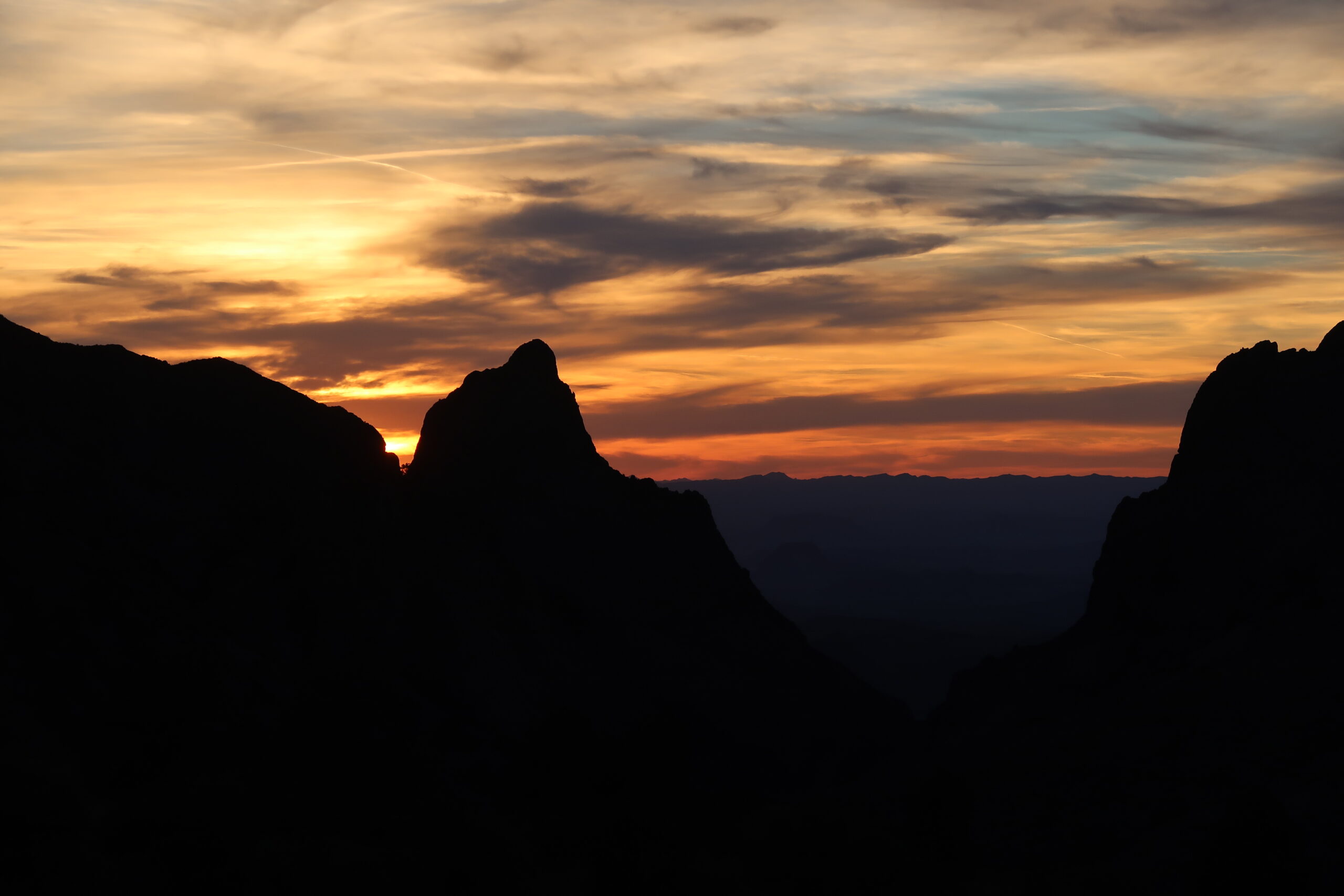
-
- There is just no place in Texas with this many miles of trails or with this kind of diversity of trials
- Family Hikes:
- Santa Elena Canyon
- Boquillas Canyon
- The Chimneys
- The Window
- Lost Mine Trail
- Best trail in the park under 5 miles
- Hiker’s Hikes
- South Rim Trail
- Emory Peak
- 2nd highest point in Texas (7,825’) – I don’t think there is anything east of it in the US that is taller
- Mule Ears
- Marufo Vega Loop Trail
- Drive Ross Maxwell Scenic Byway
- Boquillas Crossing into Mexico
- Star gazing
- Visit the hot springs
- Check out the Dinosaur fossils
- Offroading/Overlanding
- Black Gap Trail is a Jeep Badge of Honor Trail
- Canoe or Kayak the Rio Grande
- In “the area”
- Study Butte/Terlingua – Terlingua was a ghost town that has developed into a bit of loosely dubbed “gateway” town for Big Bend
- The Starlight Theater Restaurant is the most well known eatery
- We ate at the High Sierra Bar & Grill, which is part of the El Dorado Hotel – it’s not much to look at, but it was surprisingly good Mexican food
- River guides/rentals
- Lajitas
- The drive from Lajitas to Presidio on River Road is supposed to be beautiful
- Big Bend Ranch State Park is along this route
- The drive from Lajitas to Presidio on River Road is supposed to be beautiful
- Marfa – quirky little artsy town
- A bit further north you have the city of Alpine, Fort Davis State Park, McDonald’s Observatory
- Then a bit further north Guadalupe Mountains NP is near-ish in West Texas terms. Great hiking there and it’s only ~30-45 minutes from Carlsbad Caverns NP
- Study Butte/Terlingua – Terlingua was a ghost town that has developed into a bit of loosely dubbed “gateway” town for Big Bend
When to Go to Big Bend National Park?
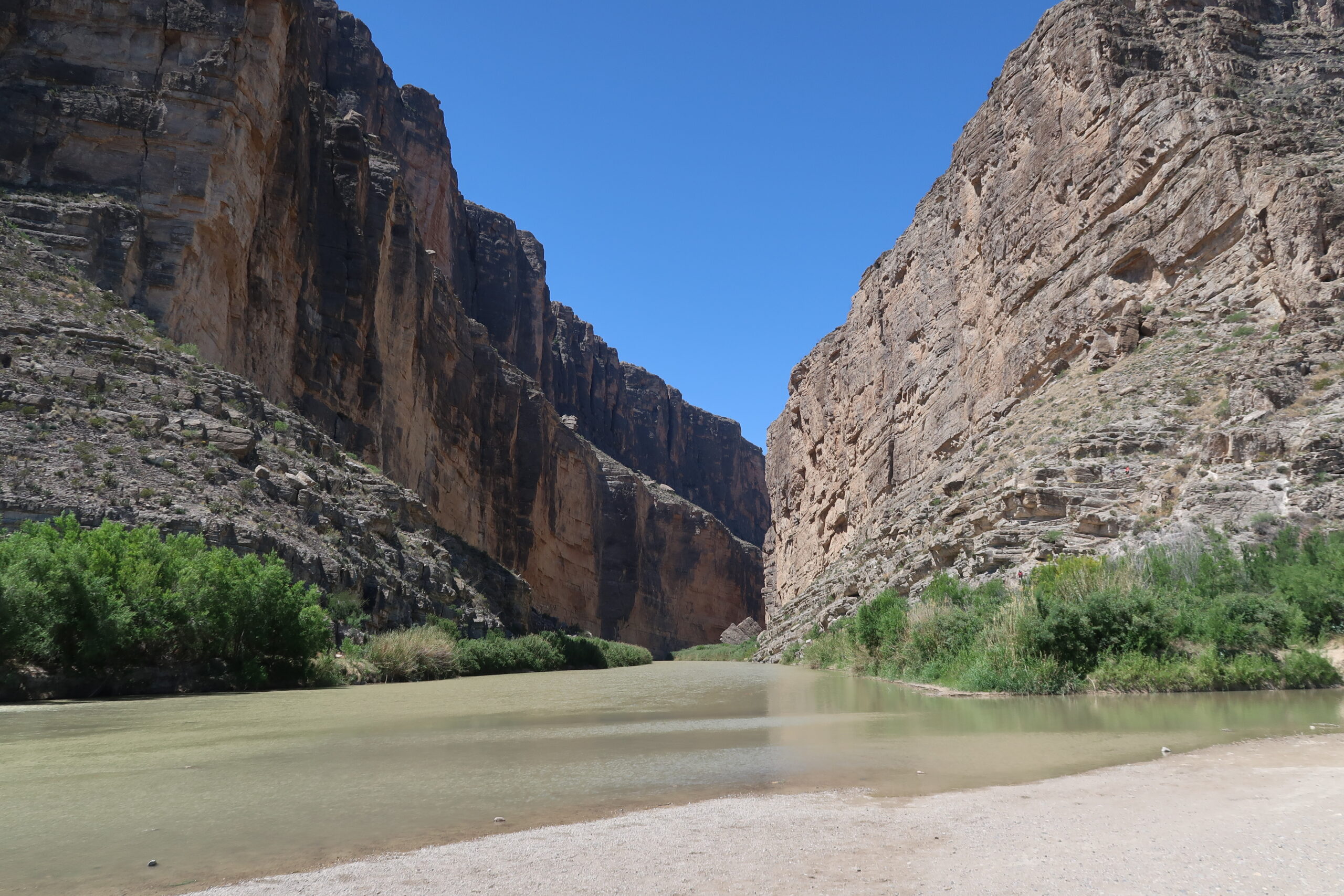
- Most visitors go from late fall through spring
- Spring break and the week of Thanksgiving are going to be crowded
- Shoulder seasons are best for us – we’ve been twice in April and once just after Thanksgiving since we have to be careful boondocking because we don’t have a furnace and can’t run our AC
Wildlife in Big Bend National Park
- Black bears and mountain lions (in the mtns)
- Bears seen regularly, lions rarely seen
- Tarantulas
- Road runners
- They look NOTHING like the Looney Toons character. Wile E Coyote has been chasing a blue ostrich around for 60 or 70 years
- Snakes, including rattle snakes and copper heads
- Deer
- Jack Rabbits
- Javalinas
- Scorpions
- (also, if you’re driving north out of the park towards the town of Marathon just after sundown you may see Elk along the highway – that’ll make you do a double look)
NPS Campgrounds Inside Big Bend National Park
- Four campgrounds inside the park
- Cottonwood Campground (I had 3 nights here on my most recent trip)
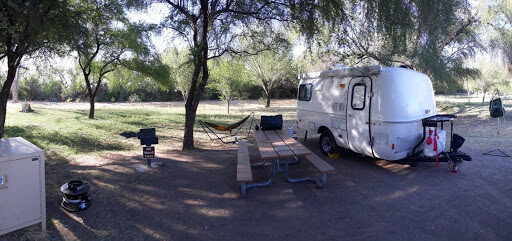
- in Castolon area of the park (SW corner)
- Close to the Rio Grande, but not on it
- Closest campground to Santa Elena Canyon, nice to be able to drive down there around dusk to cool off and experience it with less crowds
- Run by NPS
- A single loop of 24 sites amongst a grove of Cottonwood trees
- In normal times, 16 of those are reservable
- Cool in fall and winter, spring is a mixed bag, and it’s closed from May through November so people don’t melt during the night
- It is dry camping
- No hookups
- No generators allowed
- No dump station
- No wood fires allowed
- It does have a potable water faucet at the entrance and some and non-potable spigots spread throughout the loop
- A couple sets of vault toilets spread throughout the campground
- Each site has a bear boxes (primarily for Javalinas), picnic table, freestanding steel grills
- I walked through the campground at various times of the day to figure out which sites would be most desirable
- Not huge pads – there were a couple 25’ Airstreams near my site and they looked like they were squeezed in
- Mid-day shade is important
- Sites 5, 7, 15, 16, 17 are you best bets (5 has the most)
- 17 is nice because it is at the end of the row and you don’t have anyone directly on the other side of you
- Birders love this campground – I came back to my trailer twice to find birders walking around in the grassy common area behind my trailer. It was really nice to stretch out in my hammock and listen to all of them singing.
- For sunset – take a camp chair with you and turn left out of the campground – about halfway between the campground and Santa Elena Canyon is a pull off on the right hand side called “Desert Mountain Overlook”. Hike up the hill and set up your chair facing Santa Elena Canyon. The sun will disappear right above it.
- Rio Grande Village Area (SE corner of park)
-
- Two options for camping here
- Close to the Rio Grande, but not on it
- Close to Boquillas Canyon, the Boquillas Crossing, and Hot Springs
- There is a camp store (with WiFi), flushing toilets, showers, laundromat
- Open year round, but they warn it is hot starting in April
- Rio Grande Village Campground
- Run by NPS
- 100 sites
- In normal times 60 are reservable from Nov through April
- Some areas are open and some are amongst small trees
- No hookups
- ~1/2 sites allow generators
- Dump station
- Potable water
- Rio Grande Village RV Park
- 25 sites
- Run by a concessionaire – reservations by calling
- It’s on the other side of the camp store from the Rio Grande Village Campground
- Full hookups
- Paved parking lot – but it has full hookups
- Chisos Basin Campground (stayed here three times)

- I love Chisos Basin – it would be on my Mount Rushmore of favorite campgrounds we’ve been to. You’re basically in a little pocket surrounded by mountains on all sites, and all of the best trailheads are in this area
- Elevation is at 5,400’ so much more pleasant – it’ll be 10-15 degrees cooler than Cottonwood or Rio Grande Village (which are closer to 1,800’)
- The road up to Chisos restricts RVs over 24’ or trailers over 20’ so it is mostly just tents, small campers, and #vanlife
- 60 campsites
- In normal times, sites #41-60 are saved for first come first serve
- This is one of those campgrounds where if you want multiple nights in the same site during the “cool” months then you want to be logged into Recreation.gov and hitting refresh the moment the booking window opens up.
- Open year round
- Dry camping
- Generators allowed at ~1/2 sites
- Flush toilets and running water
- There is a dump station
- No wood fires (but can use propane firepits)
- Each site has a picnic table and bear box – and some have a shade shelter
- There is a camp store just up the road, next door to the visitor center (it is easily the best stocked camp store in the park)
- The campground was originally designed for tent camping so it doesn’t lay out super logically
- For a number of sites you have to drive the loop the opposite direction of the arrows on the pavement to park so your door ends up on the camp side of the road – or to get to the dump station
- Bring your levelers and make sure you have blocks for under your jack – there are some very unlevel sites
- In my most recent visit, I spent some time meandering through the campground – normally it is completely full, but since it was limited at 25% capacity it was kind of nice to get to explore the sites
- My initial thought was that Site 30 was the best – it is flat and has awesome tree shade but I realized that the path from the overflow day parking to The Window trailhead leads everyone right next to your camper
- 35-39 are good – 38 has a sun shelter, some small trees, and a grassy area for the kids to play – we had this site in our first visit and this would be my first choice when making reservations
- I also really liked site 58 – the campsite is a bit elevated from your trailer with some steps and there isn’t a shade shelter, but since you’re elevated a bit, it’s really private and there are no obstructions it is just all mountains all the way around
- Site 54 has a sun shelter and is flat and has the best view of The Window, so sunsets would be incredible from your table
- 7 is right by the dump station
- Sunset location – The Window Overlook (right next to the visitor center) – you watch the sunset through The Window
- Camping Outside of the Big Bend National Park:
- Lots of little boondocking parks west of the park in the Terlingua/Marfa area
- Maverick’s Lajitas Resort
- Hotel and RV campground, golf course, and dining
Other Tips for Visiting Big Bend National Park
- Pets at Big Bend
- Park is not very pet friendly
- Pets are not allowed on trails
- Only where cars can go
- It is all dry camping and really hot
- Wildlife – bears, mountain lions, scorpions, snakes
- Its remote – I don’t’ know where the closest vet would be if you ran into a problem
- There certainly were people with pets – but just something to keep in mind when planning your trip
- Cell reception
- Super spotty and inconsistent
- I couldn’t get signal at the Panther Junction Visitor Center – but then 4 miles into an offroad trail in the middle of no where, my phone starts pinging with text messages.
- There were a couple of spots along the Ross Maxwell Byway where I got a couple bars
- Best was at Rio Grande Village campstore and the Chisos Visitor Center
- Super spotty and inconsistent


